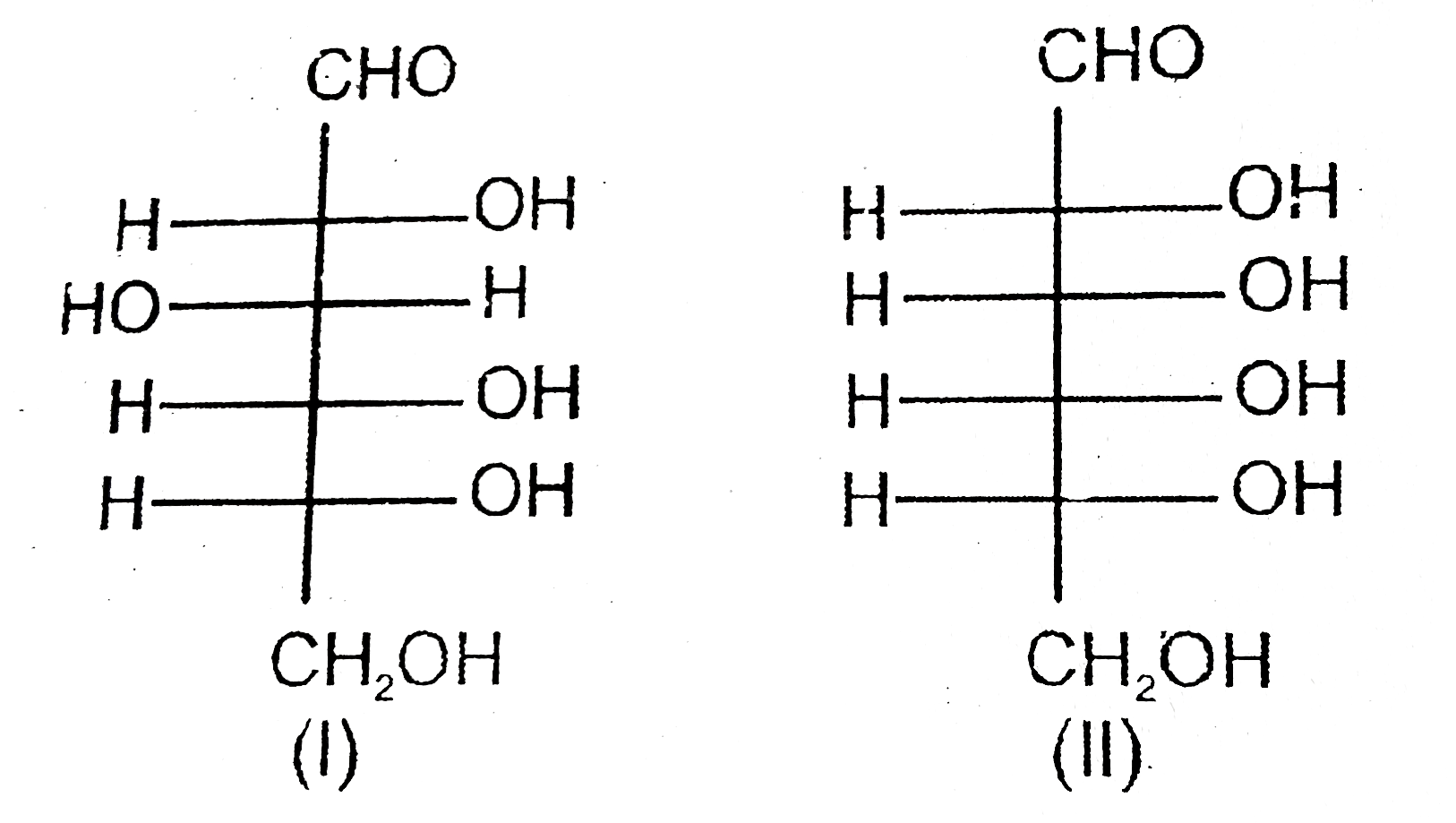Statement-1 : D-glucose (I) yields an optically active saccharic acid on treatment with HNO3 D-allose (II) yields an optically inactive alderic acid

Statement-2 : Alderic acid produced from allose (II) has plane of symmetry.
STATEMENT-1 is true, STATEMENT-2 is true and STATEMENT-2 is correct explanation for STATEMENT-1
STATEMENT-1 is true, STATEMENT-2 is true and STATEMENT-2 is not correct explanation for STATEMENT-1
STATEMENT-1 is true, STATEMENT-2 is false
STATEMENT-1 is false, STATEMENT-2 is true
The correct Answer is:A
 .
.
Topper's Solved these Questions
- BIOMOLECULESBOOK - RESONANCECHAPTER - BIOMOLECULESEXERCISE - Ex-2(Subjective)Part-I
20 Videos
- BIOMOLECULESBOOK - RESONANCECHAPTER - BIOMOLECULESEXERCISE - Ex-2(Single correct)Part-II
17 Videos
- BIOMOLECULESBOOK - RESONANCECHAPTER - BIOMOLECULESEXERCISE - Ex-1(sec-E)Part-II
14 Videos
- BASIC CONCEPTSBOOK - RESONANCECHAPTER - BASIC CONCEPTSEXERCISE - ORGANIC CHEMISTRY(BASIC CONCEPTS)
27 Videos
- BIOMOLECULES & POLYMERBOOK - RESONANCECHAPTER - BIOMOLECULES & POLYMEREXERCISE - ORGANIC CHEMISTRY(Biomolecules & Polymer)
33 Videos
Similar Questions
Knowledge Check
The optically active tartaric acid is named as D−(+)− tartaric acid because it has a positive
Aoptical rotation and is derived from D-glucoseBpH in organic solventCoptical rotation and is drived from D-(+)-glyceraldehydesDoptical rotation when substituted by deuteriumThe optically active tartaric acid is named as D−(+)− tartaric acid because it has a positive
AOptical rotation and is derived from D-glucose.BpH in organic solvent.COptical rotation and is derived from D−(+)− glyceral-dehyde.DOptical rotation when substituted by deuterium.The optically active tartaric acid is named as D-(+)-tartaric acid because it has a positive
AOptical rotation and is derived from D-glucoseBpH in organic solventCOptical rotation and is derived from D-(+)- glyceraldehydeDOptical rotation when substituted by deuterium
Statement-I: Optically active 2-idoibutane on treatment with NaI in acetone undergoes racemisation.
Because Statement-II: Repeated Walden inversions on the reactant and its product evantually gives a racemic mixure.
View SolutionStatement-1: The geometrical isomers of the complex [M(NH3)4Cl2] are optically inactive.
Statement-2: Both geometrical isomers of the complex [M[NH3)4Cl2] possess axis of symmetry.
View SolutionStatement-1: The geometrical isomers of the complex [M(NH3)4Cl2] are optically inactive.
Statement-2: Both geometrical isomers of the complex [M[NH3)4Cl2] possess axis of symmetry.
View SolutionStatement-1: The geometrical isomers of the complex [M(NH3)4Cl2] are optically inactive.
Statement-2: Both geometrical isomers of the complex [M[NH3)4Cl2] possess axis of symmetry.
View SolutionStatement-1: The geometrical isomers of the complex [M(NH4)4Cl2] are optically inactive, and
Statement-2: Both geometrical isomers of the complex [M(NH3)4Cl2] possess axis of symmetry.
View Solution
